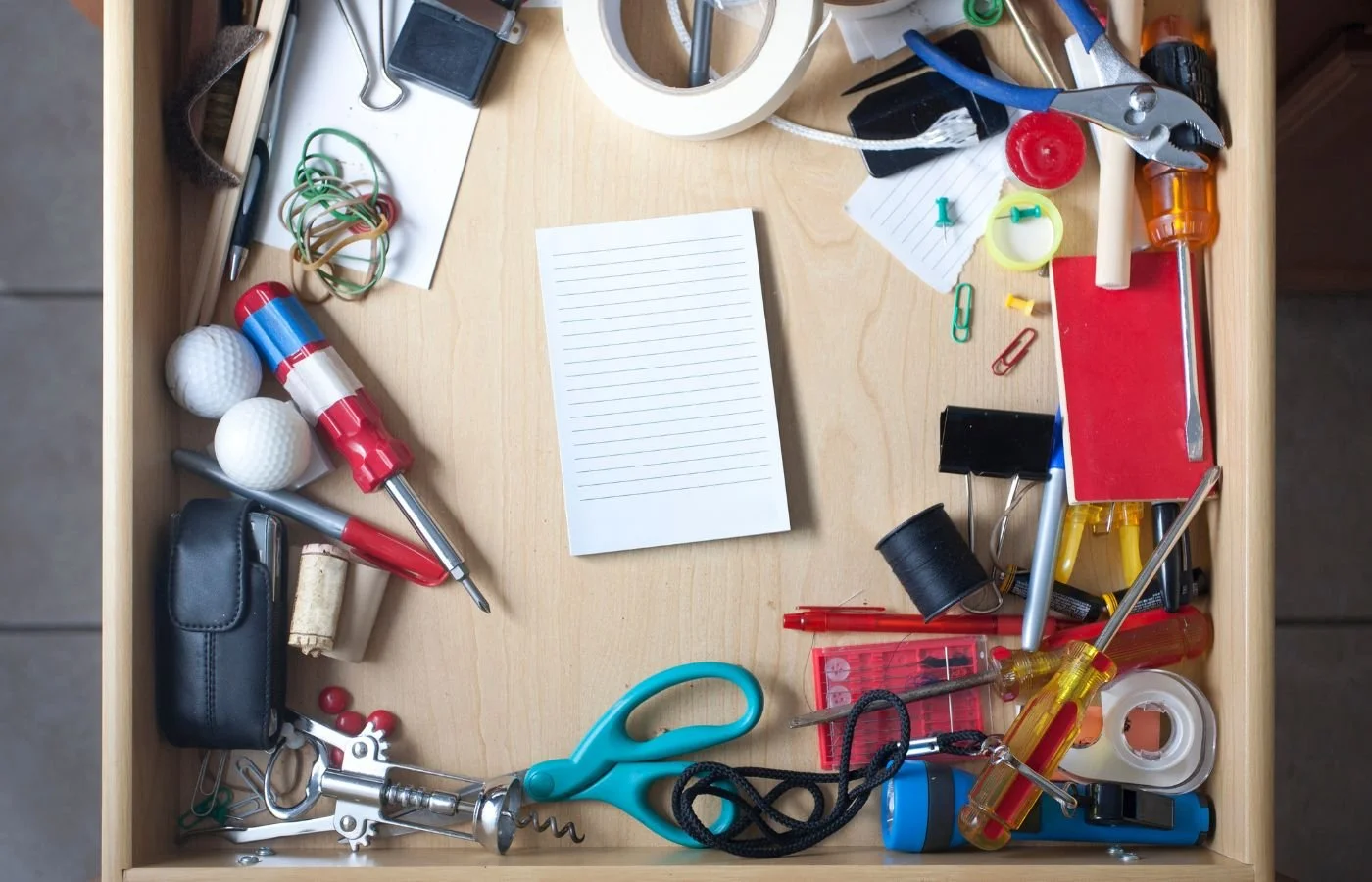Home File Organization That Brings Calm and Clarity
A home file is one of the simplest tools you can create to make your household run smoothly. Good home file organization gathers the details that matter most—important contacts, recurring bills, schedules, and home maintenance notes and keeps them in one easy-to-access place.
Whether you choose a binder, a digital folder, or a simple filing box, this system gives you a central source of truth for your home. It saves time, reduces stress, and ensures that everyone knows where to find information when it’s needed most.
Look to The Uncluttered Life’s Declutter Deck® for additional tips and tricks about home organization.
What is a home file?
Think of a home file as your household’s personal assistant. It contains the information that keeps your family and home running smoothly.
You can create a physical home file using binders, folders, or dividers, or you can design a digital version stored securely online. A digital home file allows easy access for everyone, but only one person should manage updates to keep information accurate.
If you share it digitally, make yourself the editor and set everyone else to read-only access. The goal is not just to store documents but to simplify daily living. When you know where everything belongs, you free up mental space for what truly matters.
The real benefits of home file organization
Life moves quickly, and the small details add up. When you have an organized home file, you no longer waste time searching through drawers or piles of paper to find what you need.
A well-structured home file organization system saves time when paying bills or updating records. It prevents stress during emergencies, improves communication among family members, and reduces paper clutter.
Home file organization creates stability and consistency. It also serves as a safety net. In case of illness, travel, or emergency, anyone can step in and find the information needed to manage the household.
Getting started with your home file
Begin by deciding whether your home file will be physical or digital. The best choice depends on your comfort level and your family’s needs.
A physical home file can use a sturdy binder or filing box with labeled dividers. Keep it in a safe, accessible place such as a bookshelf, office cabinet, or drawer. Consider a fireproof box for vital documents.
For a digital home file, create a master folder on a secure cloud service. Use subfolders for categories such as finances, health, and home maintenance. Limit editing access to one or two people to maintain accuracy.
No matter which version you choose, the goal is to keep information current, easy to access, and logically arranged.
What to include in a home file
Your home file should reflect the daily and seasonal needs of your household. Common sections include:
Family Information: phone numbers, emergency contacts, medical details, and school information.
Finances: bills, account numbers, and recurring payments.
Home Maintenance: service providers, appliance manuals, warranties, and seasonal checklists.
Chores and Routines: cleaning schedules, pet care, and household tasks.
Food and Meal Planning: grocery lists, favorite recipes, and pantry inventory.
Holidays and Events: calendars, travel plans, and family traditions.
Review your home file at least once a year to remove outdated materials and add new information.
What to keep separate for security
Not everything belongs in your main home file. Sensitive documents such as passports, birth certificates, wills, and financial records should be stored in a locked, fireproof box or safe deposit box.
Your home file should serve daily function, not long-term document storage. Keep it practical and easy to maintain.
Maintaining Your Home File Organization
A home file only works if it stays up to date. Make it part of your weekly or monthly routine to review and refresh your information. Replace outdated numbers, update schedules, and remove unnecessary papers.
Encourage your family to reference the home file when needed. This builds shared responsibility and helps everyone understand how the household operates.
Good home file organization is a living system. It grows and changes as your life does. Keeping it current ensures it continues to serve its purpose well.
The benefits of home file organization
Once your system is in place, you’ll notice immediate improvements. You can find what you need quickly, delegate tasks with confidence, and respond to unexpected events with less stress.
The file becomes a central hub for your home. If something happens like a family member falls ill, a trip comes up, or a repair is needed, you already have a plan.
Ultimately, home file organization is about peace of mind. It brings structure to the background details of life so you can focus on the parts that matter most.
Small systems make a big difference
Creating a home file may seem like a small step, but it has lasting impact. It replaces chaos with clarity and gives every member of your household the tools to stay informed.
You don’t need complex systems or expensive tools to make it work—just consistency. Once your home file is in place, maintaining it takes only minutes a week.
For more practical ideas to simplify your home and routines, turn to The Uncluttered Life’s Declutter Deck®, where each card is simple and easy to follow, yet makes a big difference in your home organization.






